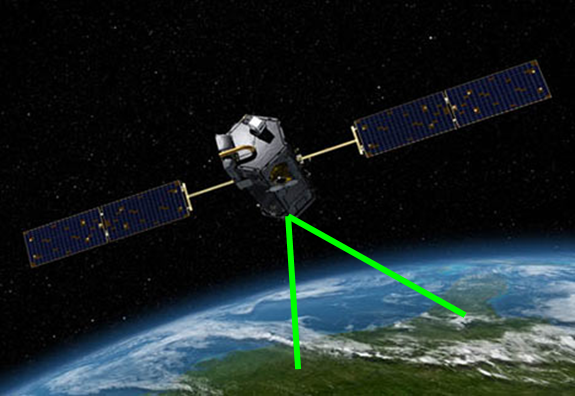A key driver to the use of Optical Communication Links (OCLs) is the availability of very large bandwidths to support high data rate transmission. In space applications, optical bands are an attractive alternative to radio frequencies (RF) for transferring the increasingly high amounts of data collected by the sensors onboard Earth observation satellites or interplanetary probes. Possible mission scenarios for space-to-ground optical communications include LEO (Low Earth Orbit), HEO (High Elliptical Orbit), or GEO (Geostationary Earth Orbit) satellites, Lunar, Lagrangian points and deep-space (DS), i.e. links from vehicles beyond the Earth-Sun distance. Optical transmission experiments carried out so far involve terminals onboard platforms orbiting the Earth. The NASA lunar mission LADEE (Lunar Atmosphere and Dust Environment Explorer), launched in September 2013, features a laser demonstrator for broadband communications with Earth stations.
Link budgets of optical systems for space applications must include a link margin to cope with the effects of the Earth's atmosphere. The propagation of optical waves through the atmosphere is impaired by gases, atmospheric particles (fog, clouds, rain, etc.) and clear-air turbulence. Optical windows free from molecular absorption include the visible region and the wavelengths traditionally used in fiber optics, i.e. 0.85 and 1.55 microns. The 1.064 micron wavelength, which exhibits a minimum in the gaseous absorption, is attractive as well for deep-space systems, due to heavy constraints on the link budget that limit the margin available to deal with atmospheric losses. Clear-air impairments include scintillations and angle-of-arrival fluctuations. However, arrays of ground telescopes spaced by a distance larger than the Fried parameter (i.e. the spatial scale of coherence of an optical beam) or large single receiver apertures substantially reduce the effects of the atmospheric turbulence in deep-space scenarios.

Opical links for Earth-space communications
A viable way to reduce the extremely strong impact of clouds on optical communication links is the deployment of multiple ground stations in site diversity schemes whose separation distance is adequately designed to markedly decrease the probability that all the stations are simultaneously affected by cloud coverage. This concept has been recently investigated by the group considering deep-space mission scenarios in which laser links operating at 1.55 micron onboard a spacecraft orbiting Mars transmit the acquired data to terminals on the Earth's surface. Simulation of the attenuation induced by clouds using electromagnetic models of the cloud droplets extinction properties and long-term radiosonde observation (RAOBS) data collected in several European sites show that, compared to the use of a single station, the probe connectivity time increases considerably when two- or three-site diversity schemes are implemented, provided that the site separation distance is between 500 and 1000 km (which is tightly linked to the high spatial correlation of clouds). This makes optical communication links a potential solution to provide high data rate links also in deep-space mission scenarios.


The stations selected to evaluate the connectivity with the Mars probe (top) and the yearly probability to exceed cloud attenuation for a single link and for two- or three-site diversity schemes (bottom)
